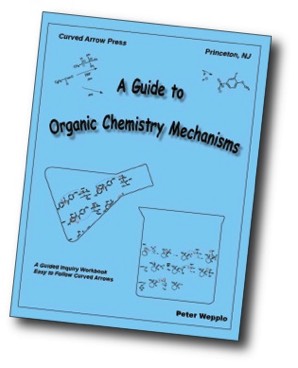
This book uses multi-tiered example-based teaching. With this approach, problems are presented at different degrees of difficulty. Success is a required element in learning, so it is important that everyone can do the problems. In Part A, only the logic of a problem is presented so everyone do it. Then the same problem is repeated in Part B in which the problem is made incrementally more difficult by removal of pre-bonds and every other intermediate. If you understood the chemistry of Part A, you should be able to complete Part B. Finally, in Part C, you must solve the problem as written in a manner similar to your textbook.
Because I believe that our brains are pattern matching machines, patterns have value in learning. The mechanisms have been written to use and repeat patterns. Using and repeating pattern can also have a profound influence on reaction mechanisms. It is difficult to suggest a different role for a chemical solely because the electrons it reacts with are delivered by a different nucleophile.
This is the book that I used in my classes in which they were was able to make the improvements noted on the ACS organic chemistry exam.